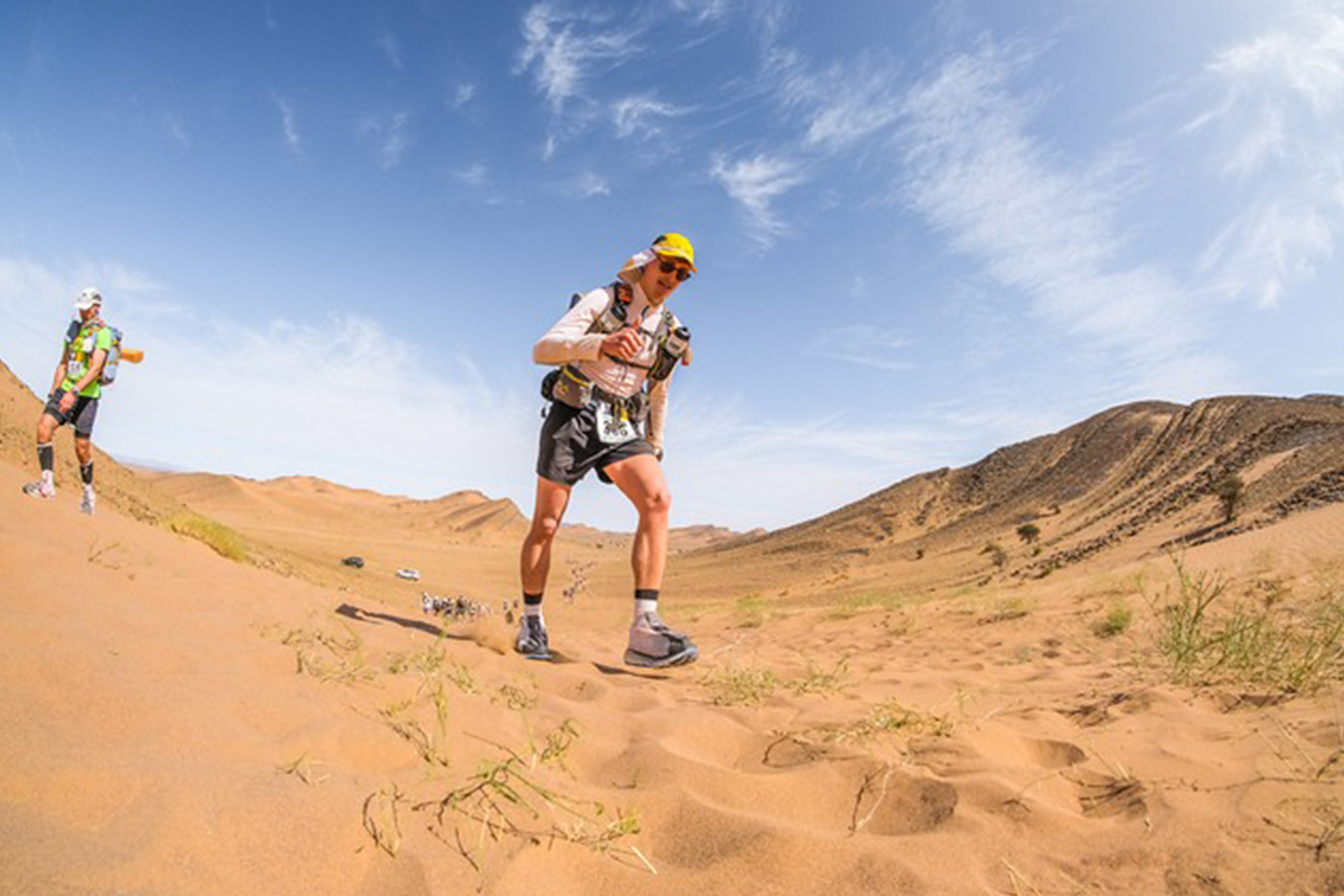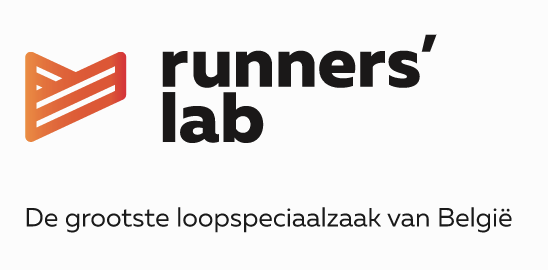Those who think of the Marathon des Sables think of sand, more sand, Tom Waes and suffering. The latter is exactly what advisor Pieter-Jan did during his first participation in the tough race. How he experienced it? Read it here.
250 km through the blood-hot desert
The Marathon des Sables for dummies: that’s 250 km of running, spread over five stages, across a blisteringly hot Sahara. And this with a backpack on your back containing all your food, sleeping bag, clothing and the like. In a nutshell, it is one of the world’s toughest running races. And why are we telling you this? Because Runners’ lab advisor Pieter-Jan Ameys was one of a thousand participants in the latest edition. Attention, spoiler ahead. Pieter-Jan passed the competition with flying colors. More to the point, he finished well within the first 200.
Suffering as a beast
“I suffered like an animal,” it sounds a few days after the race. “I knew it was going to be tough, but the conditions played a much bigger role than expected. Beforehand I thought I could handle temperatures of around 35 to 40 degrees better, but not so. Because of the temperature, things didn’t run smoothly from day one. I had little strength in my body. An unfamiliar feeling for me because during my preparation I always felt good and fresh.”
“It was definitely a unique experience, although I had really hoped to do better. Out of about a thousand participants and 800 finishers, I finished 180th. So in terms of results, definitely okay. If I compare it to the other Belgians at the start, there was more in it. One of them finished 8th, the best result ever by a Belgian, and another 27th. I knew I wasn’t as good as them, but I still expected to finish closer to them.”
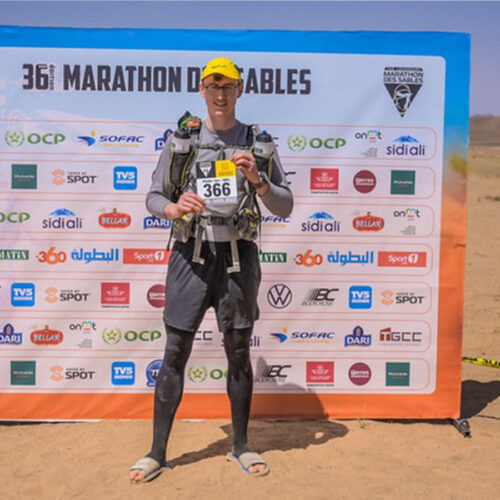
To the tones of ‘Highway to hell’
250 km divided into five stages, which looks like this: 30 km as a warm-up, 38 km on day two, 32 km the following day, a queen stage of 86 km on day four and, after a welcome rest day, another marathon to crown it all. A bird’s-eye view through the stages.
Flying in enthusiastically
“Stress! That feeling prevailed when I was at the start line on the first day. The organization thickened the nerves a bit more by having us take our seats at the start line each day first packed and bagged, under a blazing sun. Then a speaker first took the floor for another half hour and “Highway to hell” buzzed through the boxes. At that point, I just wanted to start. Once started it went well despite the heat. Maybe a little too well, because towards the end my body was already whistling me back one. I walked the last 2 to 3 km completely to still build up some reserve.”
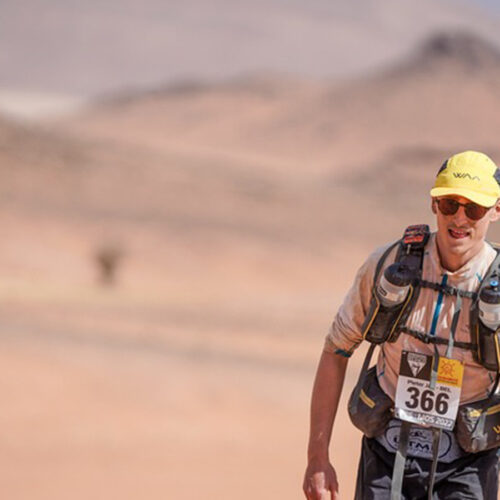
The devil is in the tail
“On day two I was equally hopeful that it would be much cooler. In the morning we were woken up each time before 6 a.m. because they came to take down the tent. Then it still felt very cold, but by the start it was a lot warmer. Despite the first stage and poor sleep, I felt pretty fresh to start. I kept a low profile in the beginning and organized myself better. This was necessary because the route was a lot heavier than the day before. The last hour my tank was completely empty again. I had little strength left. I also usually finished around the hottest point of the day, not conducive. On day three, I was completely spent at the end. Those last kilometers were the countdown to the finish.”
King of the King’s Etappe
“The queen stage actually went the best of all, you can see that in my jump in the standings. Between 11am and 5pm the sun was shining full force, but after that I came through and was able to run smoothly. The last 30 km still felt very smooth. I covered another good two hours in the dark. That didn’t bother me much either, because navigating was easy. After 86 km you finally arrive broken but fulfilled. You eat, go to sleep and then have a rest day to regain your strength. It took me almost 14h already, but it’s striking how many people still arrive during the rest day.”
Something about the final leads
“In the roadbook I had read that the last stage would start at 7 am. That is earlier than usual and in cooler temperatures. Too early, unfortunately. I was in the top 150 in the general classification and that group only left three hours later. I ran the first 20 km, but after that I walked every meter. Mentally and physically I was completely spent. I was also so tired of it. I couldn’t push myself mentally anymore. For the last three hours I couldn’t eat anything. Every sip of sports drink or gel made me gag. I stumbled in completely broken. Mentally, it was still more grueling than I had predicted beforehand.”
Thanks “Tent 36
The final balance after a week of suffering in the desert? Very positive. The Marathon des Sables may be one of the most commercialized ultratrails, but the whole organization and the whole experience will be remembered for a long time.
“The race turned out a tad different than expected, but it’s still a fantastic experience. I met great people with whom I will definitely stay in touch. I had so much fun with the comrades in the tent. They created a great atmosphere. Even if you were broken or had slept badly, there was always laughter and that helped to forget the misery. The day after the last stage there was a Charity Run. That was perhaps the best experience of the whole trip. I finished hand in hand with my tent mates. Then again, the most remarkable moment was watching the aftermovie on the very last day. Everyone was sitting together and at the end of the movie you saw everyone stumbling to the tent. Hilarious to see how nobody could walk properly.”
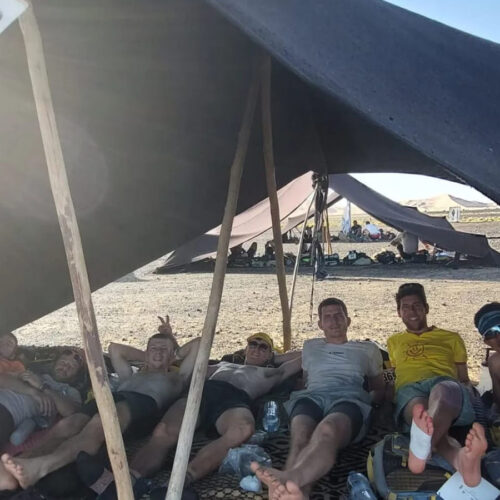
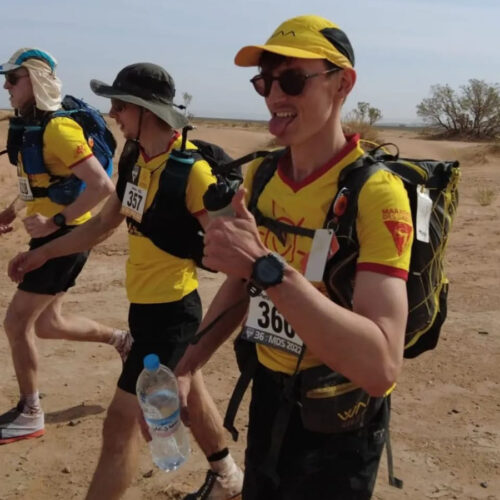
Fantasizing about pizza and spaghetti
The heat proved to be a major stumbling block. On carrying the backpack and avoiding blisters, Pieter-Jan was better prepared. In terms of nutrition, he has another tip for anyone looking to enter this race.
“From the backpack I had little trouble. Even the dreaded blisters didn’t happen, except during the longest stage. After 50 km a huge blister appeared, but it didn’t really bother me. There were others who had more problems. Some counted almost ten, so they were at the medic every night for care.”
“What I was still particularly wrong about is nutrition. I underestimated how important it is to bring things you like. If you have to cook after long efforts and eat something you don’t like, there’s little fun in it. Fortunately, I sometimes got nuts from tent mates, because in the beginning two protein bars still tasted like breakfast, but then all the texture and taste fell away. I couldn’t tolerate anything sweet anymore. After four days, I felt like I had been without decent food for a month. I started fantasizing about pizza, spaghetti… I also lost a few pounds that week, but don’t worry, they were back on quickly. The first thing I did when I got to the hotel was eat. All day long. Ah yes, one more thing I want to get rid of. For the next few weeks I don’t want to see any more sand or beach. I’ve had it completely,” said the number 180 of the 36th edition of the Marathon des Sables.
Want to know how Pieter-Jan prepared?
The Marathon des Sables is not something you run in between. Pieter-Jan had been preparing for this adventure for months. In our liveblog you can read how he handled the whole preparation and how he was looking forward to this match.
